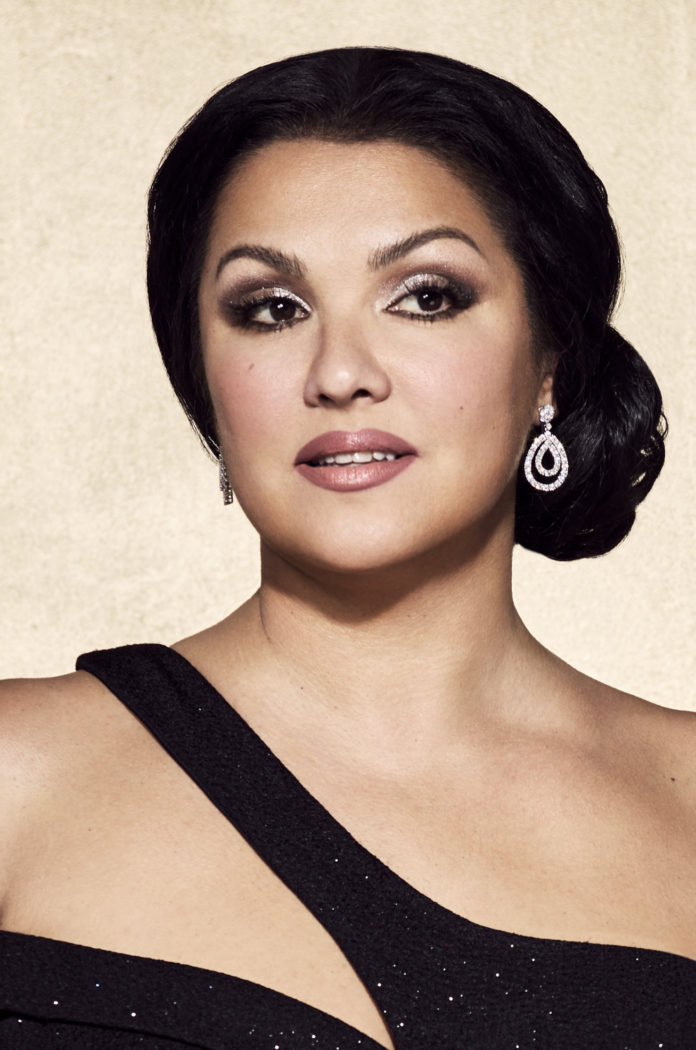La Gioconda al San Carlo. Ambientata nella Venezia del XVII secolo, la drammatica opera di Amilcare Ponchiarelli dove protagonista è la giovane abbandonata dall’amato (Enzo Grimaldo) per un’altra va in scena al Massimo napoletano dal 7 al 17 aprile. Coproduzione con il Gran Teatre del Liceu di Barcellona, mancava dai cartelloni del Lirico partenopeo dal 1977.
Questa nuova produzione diretta da Pinchas Steinberg con la regia di Romain Gilbert, le scene di Etienne Pluss, i costumi di Christian Lacroix, la coreografia di Vincent Chaillet e le lucidi Valerio Tiberi vedrà sul palco le più grandi voci della lirica contemporanea: Anna Netrebko (La Gioconda), Eve-Maud Hubeaux (Laura Adorno), Jonas Kaufmann (Enzo Grimaldo), Ludovic Tézier (Barnaba). Ad alternarsi con il cast principale saranno Lianna Haroutounian, Anna Maria Chiuri, Angelo Villari, Ernesto Petti (nelle recite dell’11, 14 e 17 aprile).
Completano gli interpreti Alexander Köpeczi (Alvise Badoèro), Kseniia Nikolaieva (La cieca), Lorenzo Mazzucchelli (Zuàne, Un cantore e Un pilota), Roberto Covatta (Isèpo), Giuseppe Todisco (Un barnabotto). Impegnate tutte le energie artistiche del teatro, Orchestra, Coro (preparato da Fabrizio Cassi), Balletto (diretto da Clotilde Vayer) e Coro di Voci Bianche (diretto da Stefania Rinaldi).
Il lavoro in quattro atti su libretto di Tobia Gorrio (Arrigo Boito), è tratto dal dramma Angélo, tyran de Padoue di Victor Hugo e fu composta tra il 1874 e il 1876. La prima rappresentazione avvenne al Teatro alla Scala l’8 aprile 1876 mentre il debutto al San Carlo è datato 1° aprile 1881. A interpretare il ruolo della protagonista sul palcoscenico del Lirico di Napoli furono artiste come Fedora Barbieri (1953), Renata Tebaldi (1967), Grace Bumbry (1977).
Con questo melodramma, considerato il suo capolavoro, Ponchielli riuscì coniugare grand opéra francese a echi verdiani, in un contesto scenico animato da passioni dai forti accenti, che prefigurano il verismo più acceso. L‘opera è nota al grande pubblico soprattutto per un pezzo orchestrale, “La danza delle ore”.
Spiega il regista: «Volevo che l’ambientazione scenica fosse a Venezia perché ci sono alcune opere che non puoi portare altrove, e La Gioconda è una di queste. In questa storia il legame con l’ambientazione è molto forte, così come, per esempio, Tosca è legata necessariamente a Roma. Ne La Gioconda c’è il Doge, la Bocca del Leone, i canali… Tutte queste cose sono scritte per Venezia. Le scene, dunque, devono essere a Venezia. Non volevo, però, riprodurre la Venezia da cartolina, la Venezia che conosciamo oggi grazie al Carnevale e ai suoi colori. Volevo riprodurre la Venezia del XVII secolo, la vera Venezia di quel tempo».
Lo spettacolo in calendario domenica 7 aprile alle ore 17 è stato aperto al pubblico in via straordinaria per celebrare il 30° anniversario del debutto di Anna Netrebko in palcoscenico.

Director Romain Gilbert: “My Gioconda lives in the real 17th century Venice
La Gioconda at the San Carlo. Set in 17th-century Venice, Amilcare Ponchiarelli’s dramatic opera, in which the protagonist is a young woman abandoned by her lover (Enzo Grimaldo) for another one, will be performed at the Teatro Massimo in Naples from April 7th to 17th. A co-production with Barcelona’s Gran Teatre del Liceu, it has been missing from the billboards of the Neapolitan Lyric Theater since 1977.
This new production, directed by Pinchas Steinberg, with staging by Romain Gilbert, sets by Etienne Pluss, costumes by Christian Lacroix, choreography by Vincent Chaillet and sets by Valerio Tiberi, will bring the greatest voices of contemporary opera to the stage: Anna Netrebko (La Gioconda), Eve-Maud Hubeaux (Laura Adorno), Jonas Kaufmann (Enzo Grimaldo), Ludovic Tézier (Barnaba). Alternating with the principal cast will be Lianna Haroutounian, Anna Maria Chiuri, Angelo Villari and Ernesto Petti (performances on April 11th, 14th and 17th).
Completing the performers are Alexander Köpeczi (Alvise Badoèro), Kseniia Nikolaieva (La cieca), Lorenzo Mazzucchelli (Zuàne, Un cantore, and Un pilota), Roberto Covatta (Isèpo), and Giuseppe Todisco (Un barnabotto). Engaging all the artistic energies of the theater, Orchestra, Chorus (prepared by Fabrizio Cassi), Ballet (directed by Clotilde Vayer), and White Voices Chorus (directed by Stefania Rinaldi).
The work in four acts, with a libretto by Tobia Gorrio (Arrigo Boito), is based on the drama Angélo, tyrant of Padua by Victor Hugo. It was composed between 1874 and 1876. The opera was first performed at the Teatro alla Scala on April 8, 1876. Its debut at the San Carlo is dated April 1, 1881. Artists such as Fedora Barbieri (1953), Renata Tebaldi (1967), and Grace Bumbry (1977) played the title role on the stage of the Naples Lirico.
With this melodrama, considered his masterpiece, Ponchielli succeeded in combining grand French opera with echoes of Verdi, in a scenic setting enlivened by strongly accented passions, foreshadowing the most vivid verismo. The opera is best known to the general public for an orchestral piece, “The dance of the hours”.
Explains the director, “I wanted the stage setting to be in Venice because there are some works that you cannot take elsewhere, and La Gioconda is one of them.” In this story, the connection with the setting is very strong, just as Tosca is necessarily tied to Rome, for example. In La Gioconda, there is the Doge, the Lion’s Mouth, the canals – all of these things are written for Venice. The scenes, therefore, have to be in Venice. However, I did not want to reproduce the postcard Venice, the Venice we know today thanks to Carnival and its colors. I wanted to reproduce the Venice of the 17th century, the real Venice of that time.
The performance scheduled for Sunday, April 7th at 5 p.m. was opened to the public on an extraordinary occasion to celebrate the 30th anniversary of Anna Netrebko’s stage debut.










